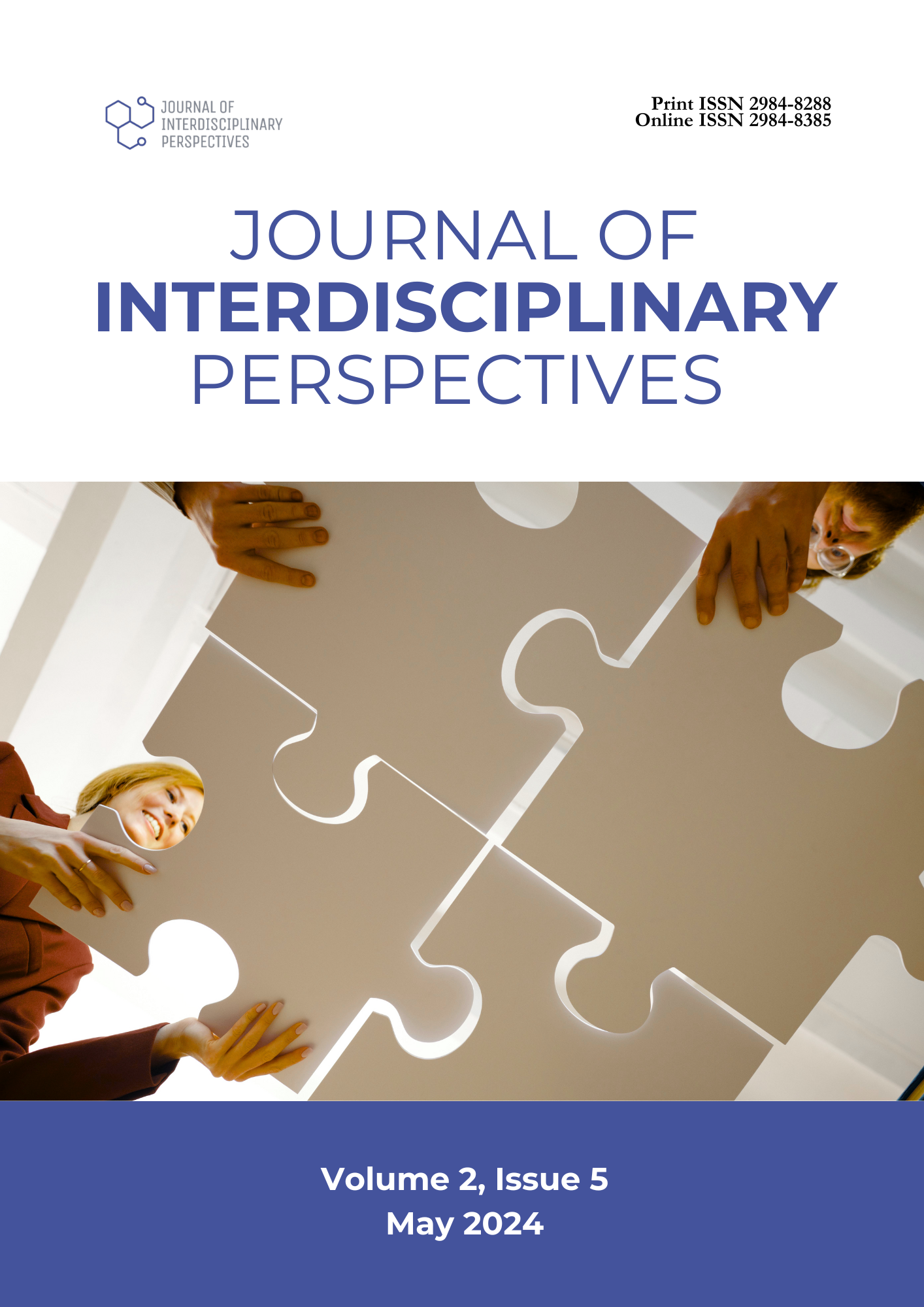Teaching Strategy and Mathematics Performance of Maritime Students in the New Normal
DOI:
https://doi.org/10.69569/jip.2024.0066Keywords:
Maritime education, Mathematics performance, Teaching strategies, New normalAbstract
The COVID-19 pandemic has abruptly changed educational paradigms, especially in maritime education. Online learning has presented unprecedented difficulties to instructors' instruction quality and student results. This study examines how maritime education professors' teaching strategies affect students' math performance. The research examines the domain of teaching strategies of college instructors that significantly influence the mathematics performance of maritime students. The descriptive correlational non-experimental design was employed, and the study involved 100 maritime students enrolled in Math 1 during the 2021-2022 academic year, selected via random sampling. Student perceptions were collected using a standardized questionnaire to gain data on instructional practices. Academic grades were used to evaluate mathematics performance. The data was analysed using statistical methods such as mean calculations, Pearson correlation coefficients, and linear regression to assess the importance of correlations between variables. Results revealed that the teaching strategies of college instructors in teaching mathematics as perceived by the maritime students were very high. Also, the findings revealed that teaching strategies and mathematics performance of maritime students have no significant relationship. Although it may appear unexpected that there is no direct correlation between teaching strategies and mathematics performance, the role of affective strategies underscores the need to cultivate a pleasant emotional environment in maritime education. The implementation of strategies that target the enhancement of student motivation, engagement, and emotional well-being has been identified as crucial in the improvement of mathematics performance in the face of the difficulties associated with online learning. Based on the aforementioned findings, it is recommended that educators and institutions give precedence to the advancement and execution of affective teaching methodologies specifically designed to cater to the requirements of maritime students. Furthermore, it is necessary to conduct additional research to investigate the effectiveness of particular instructional interventions and student support systems in maximizing academic achievements in the context of online maritime education.
Downloads
References
Anderson, L. W., Krathwohl, D. R., & Bloom, B. S. (2001). A taxonomy for learning, teaching, and assessing : a revision of Bloom’s taxonomy of educational objectives (Complete ed.). Longman.
Open Colleges. (n.d.). Learning strategies for the new normal. https://www.opencolleges.edu.au/blogs/articles/learning-strategies-for-the-new-normal
Bringula, R., Reguyal, J. J., Tan, D. D., & Ulfa, S. (2021). Mathematics self-concept and challenges of learners in an online learning environment during COVID-19 pandemic. Smart Learning Environments, 8(1), 22. https://doi.org/10.1186/s40561-021-00168-5
British Council (2020). Affective Strategies. https://www.teachingenglish.org.uk/article/affective-strategies
Costley, J. (2020). Using cognitive strategies overcomes cognitive load in online learning environments. Interactive Technology and Smart Education, 17(2), 215–228. https://doi.org/10.1108/ITSE-09-2019-0053
Garay, U., & Etxebarria, A. (2012). Combining affective strategies and the internet for learning second languages. https://www.semanticscholar.org/paper/Combining-affective-strategies-and-the-internet-for-Garay-Etxebarria/e1638877fd52798bd18345313e2974bdbdf8fd93
Dayagbil, F. T., Palompon, D. R., Garcia, L. L., & Olvido, M. M. J. (2021). Teaching and learning continuity amid and beyond the pandemic. Frontiers in Education, 6. https://doi.org/10.3389/feduc.2021.678692
Hamilton, L., Kaufman, J., & Diliberti, M. (2020). Teaching and leading through a pandemic: Key findings from the american educator panels spring 2020 covid-19 surveys. RAND Corporation. https://doi.org/10.7249/RRA168-2
Hamzeh, M. A. H. (2014). Teaching strategies used by mathematics teachers in the jordan public schools and their relationship with some variables. American Journal of Educational Research, 2(6), 331–340. https://doi.org/10.12691/education-2-6-1
Hodges, C., Moore, S., Trust T., Bond A. (2020). The difference between emergency remote teaching and online learning. Educause. https://er.educause.edu/articles/2020/3/the-difference-between-emergency-remote-teaching-and-online-learning
Kirch, W. (2008). Encyclopedia of Public Health. https://link.springer.com/referencework/10.1007/978-1-4020-5614-7
König, J., Jäger-Biela, D. J., & Glutsch, N. (2020). Adapting to online teaching during COVID-19 school closure: Teacher education and teacher competence effects among early career teachers in Germany. European Journal of Teacher Education, 43(4), 608–622. https://doi.org/10.1080/02619768.2020.1809650
Lavrakas, P. (2008). Encyclopedia of survey research methods. Sage Publications, Inc. https://doi.org/10.4135/9781412963947
Pishghadam, R. and Zabihi, R. (2012). Crossing the threshold of Iranian TEFL. Applied Research in English. https://www.researchgate.net/publication/267856793_Crossing_the_threshold_of_Iranian_TEFL
Renard L. (2019). Direct instruction - A practical guide to effective teaching. https://www.bookwidgets.com/blog/2019/03/direct-instruction-a-practical-guide-to-effective-teaching
Reich, J., Buttimer, C. J., Coleman, D., Colwell, R. D., Faruqi, F., & Larke, L. R. (2020). What’s lost, what’s left, what’s next: Lessons learned from the lived experiences of teachers during the 2020 novel coronavirus pandemic [Preprint]. EdArXiv. https://doi.org/10.35542/osf.io/8exp9
ScholarChip (2020). 8 Student Behavior Management Strategies for In and Out of the Classroom. https://www.scholarchip.com/student-behavior-management-strategies/
Sharp, E. A., Norman, M. K., Spagnoletti, C. L., & Miller, B. G. (2021). Optimizing synchronous online teaching sessions: A guide to the “new normal” in medical education. Academic Pediatrics, 21(1), 11–15. https://doi.org/10.1016/j.acap.2020.11.009
The Philippine Star (2020). Math teachers: Bracing for the new normal. https://www.philstar.com/other-sections/letters-to-the-editor/2020/09/23/2044408/math-teachers-bracing-new-normal
Tria, J. Z. (2020). The COVID-19 Pandemic through the Lens of Education in the Philippines: The New Normal. International Journal of Pedagogical Development and Lifelong Learning, 1(1), ep2001. https://doi.org/10.30935/ijpdll/8311
UNESCO (2020). Covid-19 Education Response. https://en.unesco.org/covid19/educationresponse/globalcoalition
Villegas, B. (2021). Addressing the Philippine education crisis. Human Side of Economics. https://www.bworldonline.com/addressing-the-philippine-education-crisis-2/
Downloads
Published
How to Cite
Issue
Section
License
Copyright (c) 2025 Journal of Interdisciplinary Perspectives

This work is licensed under a Creative Commons Attribution-NonCommercial 4.0 International License.








